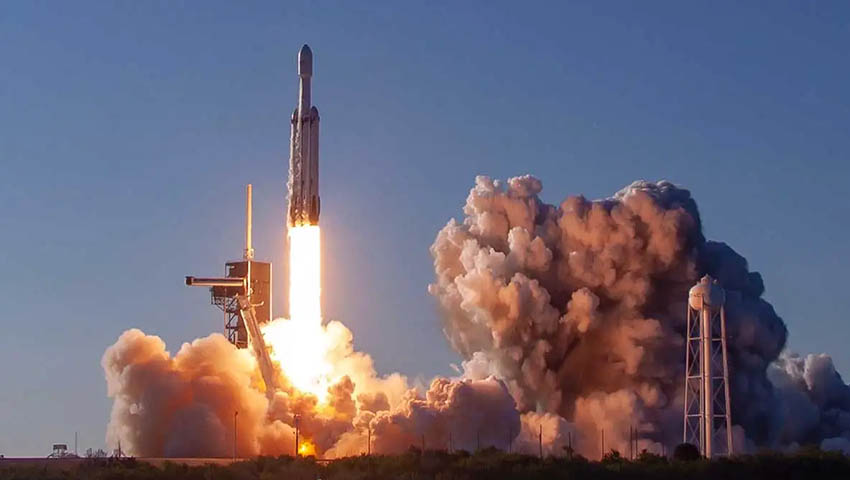The NASA missions lifted off at 2:30am EDT Tuesday (4:30pm AEST) from NASA’s Kennedy Space Center in Florida, as part of the US Department of Defense’s Space Test Program-2 (STP-2) launch.
Jim Reuter, associate administrator for NASA’s Space Technology Mission Directorate, said, "This launch was a true partnership across government and industry, and it marked an incredible first for the US Air Force Space and Missile Systems Center."
The missions, each with a unique set of objectives, will aid in smarter spacecraft design and benefit the agency’s moon to Mars exploration plans by providing greater insight into the effects of radiation in space and testing an atomic clock that could change how spacecraft navigate.
"The NASA missions aboard the Falcon Heavy also benefited from strong collaborations with industry, academia and other government organisations," Reuter added.
With launch and deployments complete, the missions will start to power on, communicate with Earth and collect data. They each will operate for about a year, providing enough time to mature the technologies and collect valuable science data. Below is more information about each mission, including notional timelines for key milestones.
The experiments launched on the Falcon Heavy include:
- Enhanced Tandem Beacon Experiment: Two NASA CubeSats making up the Enhanced Tandem Beacon Experiment (E-TBEx) deployed at 3:08 and 3:13am. Working in tandem with NOAA's COSMIC-2 mission – six satellites that each carry a radio occultation (GPS) receiver developed at NASA’s Jet Propulsion Laboratory (JPL) – E-TBEx will explore bubbles in the electrically-charged layers of Earth's upper atmosphere, which can disrupt communications and GPS signals that we rely on every day. The CubeSats will send signals in several frequencies down to receiving stations on Earth. Scientists will measure any disruptions in these signals to determine how they're being affected by the upper atmosphere.
- Deep Space Atomic Clock: NASA’s Deep Space Atomic Clock is a toaster oven-sized instrument traveling aboard a commercial satellite that was released into low-Earth orbit at 3:54am. The unique atomic clock will test a new way for spacecraft to navigate in deep space. The technology could make GPS-like navigation possible at the moon and Mars.
- Green Propellant Infusion Mission: The Green Propellant Infusion Mission (GPIM) deployed at 3:57am and immediately began to power on. GPIM will test a new propulsion system that runs on a high-performance and non-toxic spacecraft fuel. This technology could help propel constellations of small satellites in and beyond low-Earth orbit.
- Space Environment Testbeds: The US Air Force Research Laboratory’s Demonstration and Science Experiments (DSX) was the last spacecraft to be released from STP-2 at 6:04am. Onboard is an instrument designed by JPL to measure spacecraft vibrations, and four NASA experiments that make up the Space Environment Testbeds (SET). SET will study how to better protect satellites from space radiation by analysing the harsh environment of space near Earth and testing various strategies to mitigate the impacts. This information can be used to improve spacecraft design, engineering and operations in order to protect spacecraft from harmful radiation driven by the sun.
Nicola Fox, director of the Heliophysics Division in NASA’s Science Mission Directorate, said, "It was gratifying to see 24 satellites launch as one. The space weather instruments and science CubeSats will teach us how to better protect our valuable hardware and astronauts in space, insights useful for the upcoming Artemis program and more."
In all, STP-2 delivered about two dozen satellites into three separate orbits around Earth. Kennedy Space Center engineers mentored Florida high school students who developed and built a CubeSat that also launched on STP-2.
GPIM and the Deep Space Atomic Clock are both part of the Technology Demonstration Missions program within NASA’s Space Technology Mission Directorate. The Space Communications and Navigation program within NASA’s Human Exploration and Operations Mission Directorate also provided funding for the atomic clock. SET and E-TBEx were both funded by NASA’s Science Mission Directorate.

